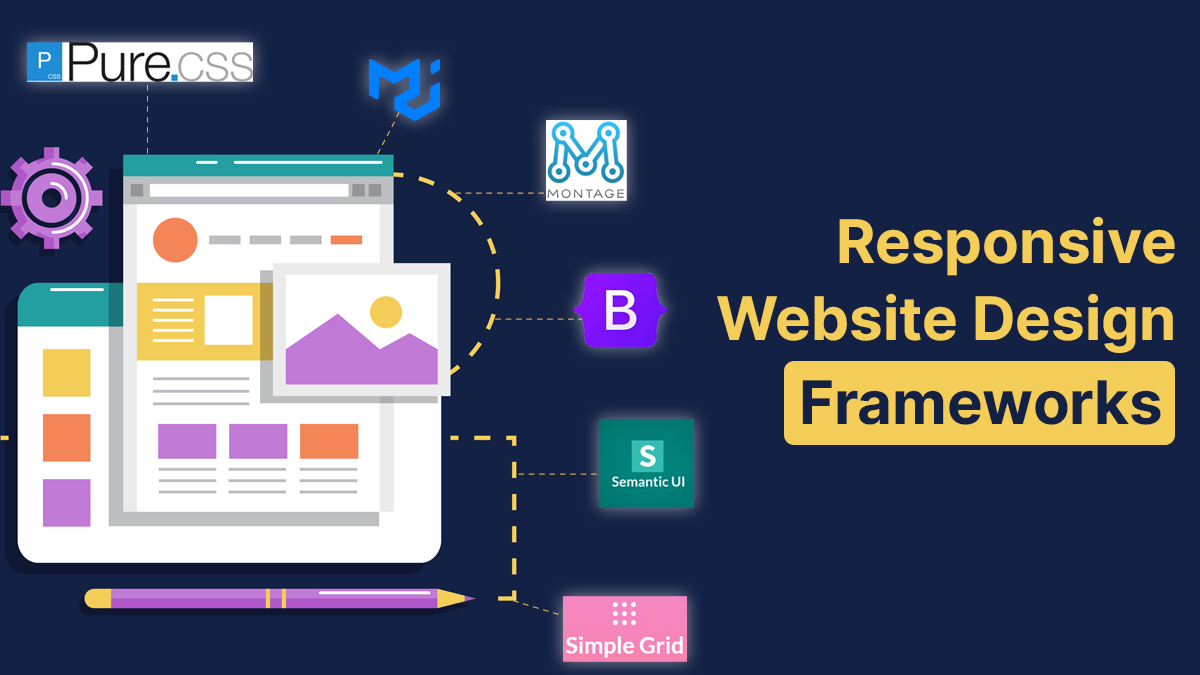Maintaining your website is crucial, just as selecting the proper front-end framework is vital, especially in the realm of responsive website design. With the prevalence of mobile devices, mobile-friendliness is non-negotiable; otherwise, your website may lack pixel-perfect precision.
Recognizing the significance of a responsive website design framework, numerous companies foresaw the demand and started offering adaptable web design systems. These solutions significantly reduce development time while upholding quality.
The use of responsive website design frameworks is widespread in the IT services market. These frameworks are favored for their user-friendliness and simplicity, making them a top choice for many. They come as all-inclusive solutions and include off-canvas designs, an essential component in any web development process.
It’s important to note that responsive website design platforms are essentially software that encompasses a wealth of HTML, CSS, and JavaScript code, simplifying the creation of flexible web designs. However, the industry offers a wide array of frameworks to choose from.
So, have you considered which software development framework is best suited for front-end development? More specifically, have you thought about which UI design shines within the context of a responsive website design framework? Let’s explore some of the top dynamic web design platforms available today. These platforms not only assist you in building adaptable web pages but also position you for future development.
What Are The Advantages Of Web Frameworks?
Building a web or mobile app does not necessarily require the use of a specific web programming framework, but leveraging one can significantly enhance and simplify the development process. It is highly recommended to utilize a framework, as tackling tasks like generating app ideas, development, testing, and app management without one can be challenging.
Now, let’s delve into some key features of various robust web application platforms that make them valuable choices for web design services.
Enhances Programming Languages
Frameworks become essential when working with intricate programming languages, providing straightforward and easily integrated functionalities.
Consider JavaScript, for instance. Without a framework, you’d have to write numerous lines of code solely to maintain your program’s data integrity. Frameworks like React, however, automate this task.
Most programming languages offer a range of frameworks tailored to diverse scenarios. They serve as an excellent way to learn and master a new language. Start by familiarizing yourself with the language’s fundamental programming principles, and then commence coding within its framework.
Furthermore, by incorporating built-in functionalities, frameworks can expedite additional operations, tasks that might be cumbersome for a human to carry out.
Streamlining Development With Frameworks
Frameworks are your best companion, especially when you’re a novice in web development seeking a swift and efficient kickoff. Opting for well-established open-source platforms, such as the ones mentioned above, makes perfect sense, particularly for developers working against tight deadlines or within budget constraints. These frameworks not only save time in software development but also contribute to the overall efficiency of the SaaS development cycle.
For rapid development of client-side applications, we recommend considering React or Vue. Meteor and Ruby on Rails are also excellent choices, especially when focusing on creating prototypes with Minimum Viable Products (MVP) in mind.
The advantage of using these frameworks is the ability to build an app tailored to your requirements swiftly. Furthermore, they offer remote developers ample flexibility to experiment with and implement new AI product concepts. It’s all about efficiency and agility, two critical aspects within the development industry.
Reusability
One significant advantage is that it encourages the creation of modules that can be reused in various parts of your program or even across other projects. Consider outsourcing your software development to an Indian team. They can create modules that are not only beneficial for the current project but also for future ones.
Reusability has an impact that extends beyond simply saving time. It significantly enhances productivity, supportability, and data integrity, especially in large-scale systems with a substantial development team. When developers don’t have to start from scratch, they have more time to focus on fine-tuning program logic.
Standardized Code Practices
It is crucial to adhere to specified guidelines in your programming processes. Most frameworks have a predefined code architecture that you should follow. This is not merely a formality; it promotes uniformity across your software and expedites debugging. Furthermore, it streamlines and condenses your code.
The emphasis is on following standard coding and design principles. Various frameworks and libraries, for example, adhere to principles such as Google’s Material Design. While this may seem restrictive to some developers, embracing these established techniques significantly improves consistency and readability, especially when you are new to the codebase or working with a large team.
The Most Popular Responsive Website Design Frameworks
To design and maintain websites, a framework is essential. The abundance of options can make selecting one challenging. Consequently, we have compiled a list of the finest tools and frameworks currently in use to simplify programming.
Pure CSS (Free And Open-Source CSS Framework)
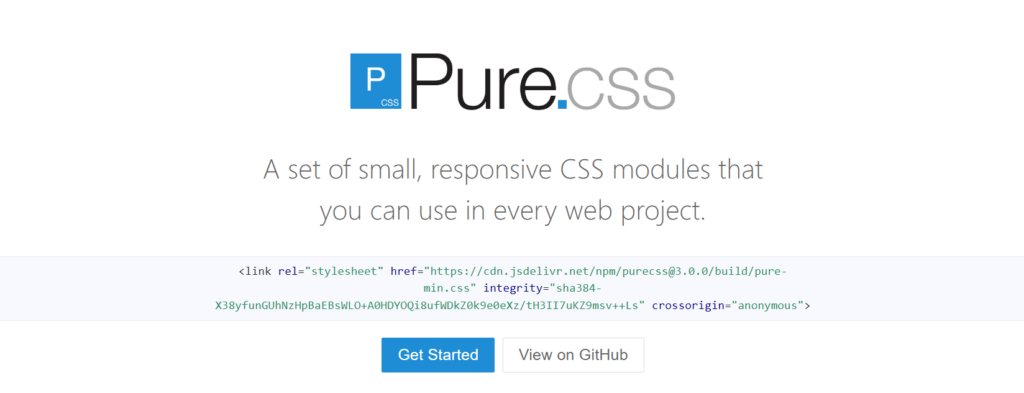
Pure CSS serves as your web project toolkit, featuring a collection of simple, adaptable CSS components suitable for every project. As it’s just a CSS snippet, it’s as lightweight as it sounds. Front-end developers appreciate it for its compatibility with the mobile-first approach, making it an excellent choice.
The key highlight is its emphasis on clean styling, giving you the flexibility to customize website and application styles to your preference. Notably, the framework offers a wide array of high-quality CSS capabilities that align precisely with the Pure CSS foundation. It’s not just simple; it’s the ideal toolkit for crafting clean and responsive websites.
Skeleton (Free & Open-Source CSS Framework)
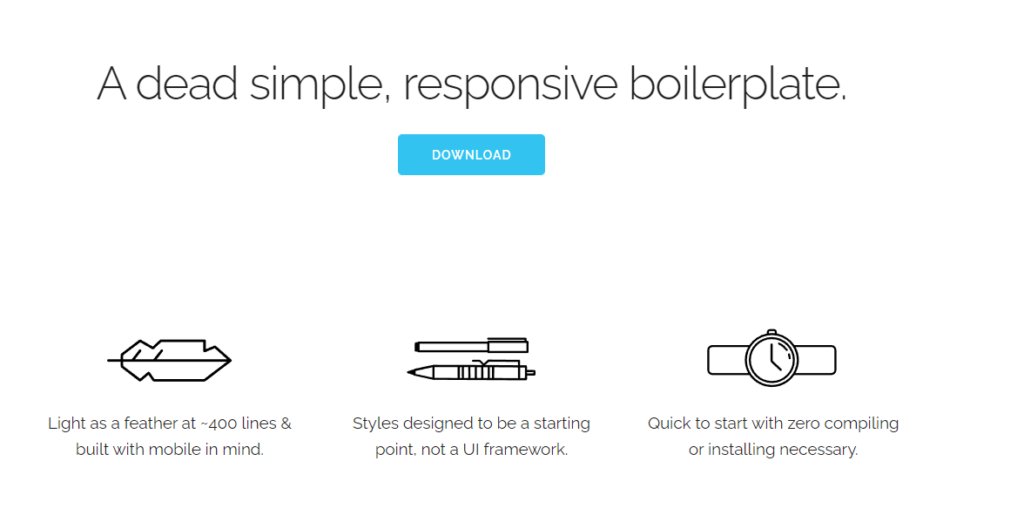
Skeleton is an excellent option for web development, offering a relatively lightweight, fast, and responsive framework. It adapts swiftly, whether you’re working on a minimum viable product (MVP) or a full-fledged product, making it a popular choice in web design.
Skeleton seamlessly integrates into any project, regardless of your website’s size. It’s an outstanding framework for designing online applications across various platforms, including desktops, tablets, and mobile devices, with a 960-grid base.
This framework not only provides a solid foundation with fundamental UI components like form buttons and tabs but also maintains a clean file structure. This systematic approach significantly reduces overall website development time while delivering superior results. It’s no surprise that Skeleton is widely employed for eCommerce websites, contributing to an appealing front-end and expected to gain even more popularity.
Montage (Free & Open-Source JavaScript Framework)
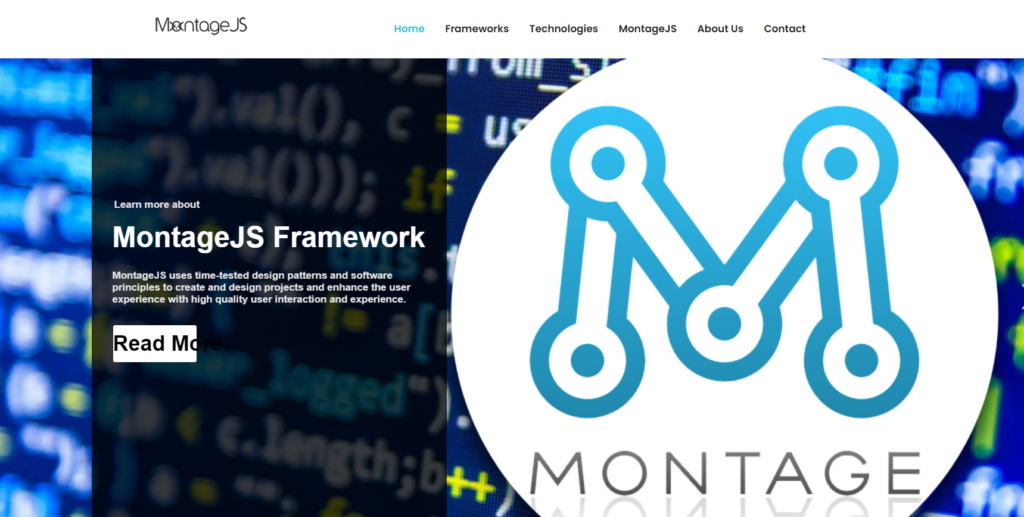
Montage JS is a favored choice among developers, particularly those who specialize in creating single-page applications. The framework features an HTML structure with unique attributes like reusable components and data declaration. It encompasses a set of characteristics that enhance the scalability and feasibility of UI components. Consequently, websites are built using Montage Excel across platforms, seamlessly adapting from mobile devices to desktops without compromising quality.
Montage leverages an HTML template alongside its intrinsic components, such as reusable parts and data declaration. The framework’s capabilities for single-page application development make it a preferred choice among front-end developers. This ensures maximum performance and a consistent user experience across various platforms.
Material UI (Free & Open-Source React UI Framework)
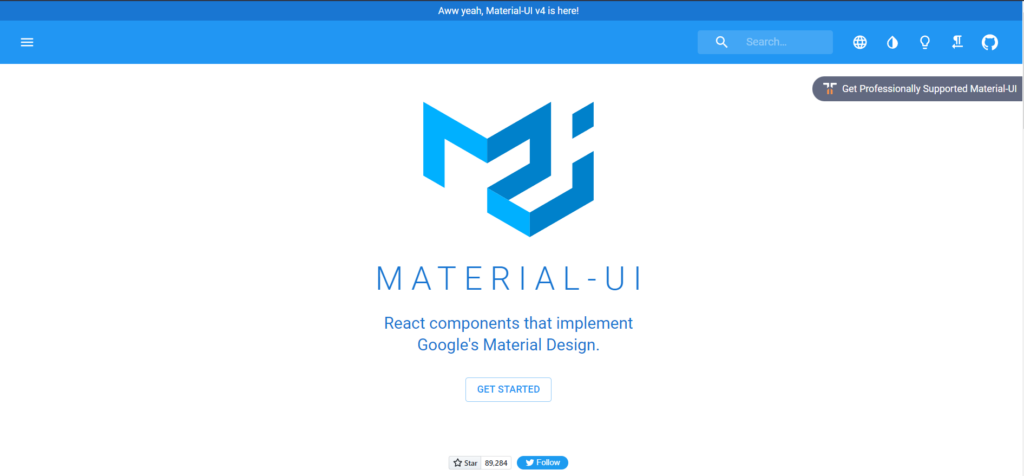
From the outset, this framework offers a comprehensive collection of React components that seamlessly align with Google Material Design. Not only does it adhere to Google Material Design, enabling the construction of Android apps, but it also boasts multiple layers and intricate features, making it a versatile choice for web projects requiring robust front-end capabilities.
Moreover, its built-in CSS preprocessor ensures that various UI components are utilized to their fullest potential. Consequently, when projects demand significant functionality, Material UI emerges as the top choice among front-end designers, epitomizing the aspirations of the creative front-end industry.
Bootstrap (Free & Open-Source CSS Framework)
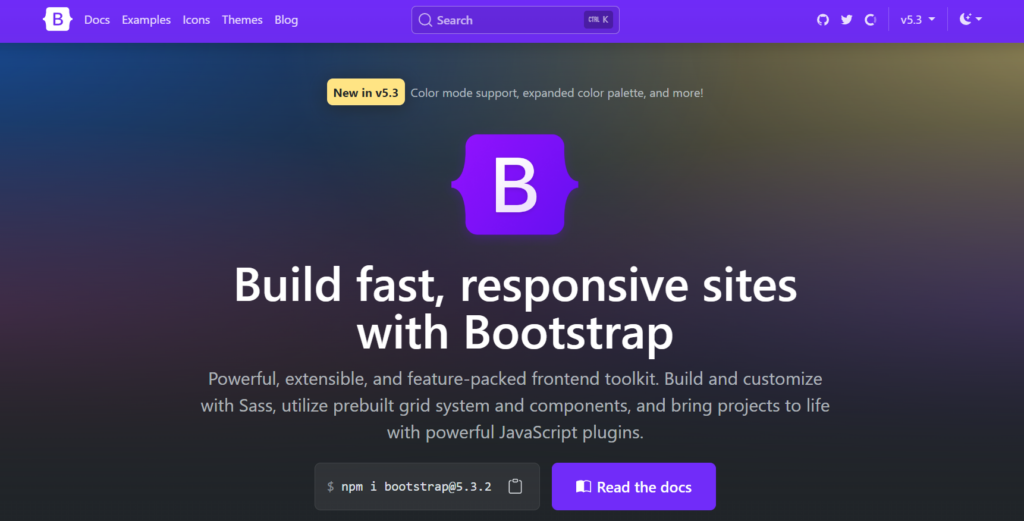
Bootstrap stands as your go-to framework for rapidly and effortlessly crafting high-quality websites. It’s not only reliable but also provides essential structural components, like CSS grids, which simplify the creation of straightforward navigation systems for your online projects. Bootstrap streamlines the process of developing highly responsive websites or web apps, even for those with a basic grasp of web technologies like HTML, CSS, and JavaScript.
This framework proves highly beneficial for aspiring front-end designers and companies alike. What sets Bootstrap apart is its array of customizable themes and templates that can be tailored to meet industry requirements and personal preferences. Notably, it adopts a mobile-first approach, rendering Bootstrap-designed websites and online apps device-independent.
So, whether you’re a budding developer or an entrepreneur, Bootstrap empowers you to swiftly create adaptable, high-quality websites that perform seamlessly across devices.
Also Read: How To Develop Custom WordPress Themes!
Semantic UI (Free & Open-Source CSS Framework Based On LESS & jQuery)
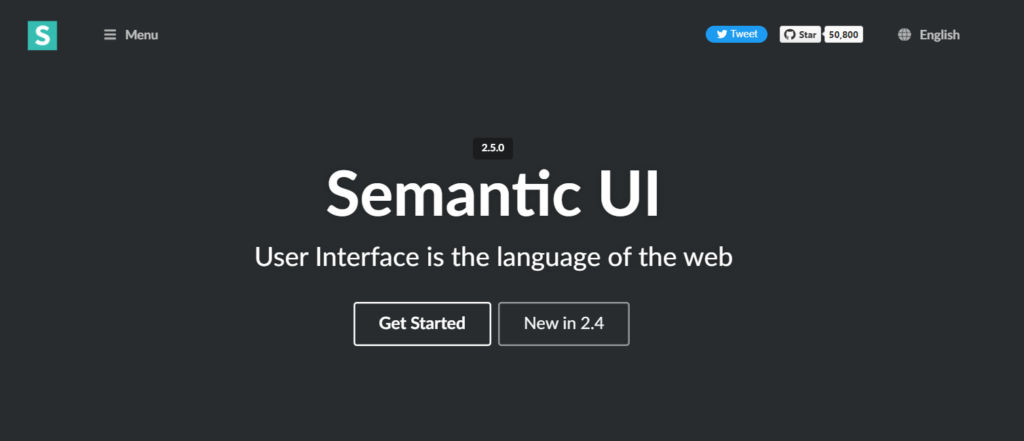
Semantic UI distinguishes itself as a popular framework with integrated third-party style rules. It boasts a diverse range of UI components, such as pre-loaders, breadcrumbs, and buttons, and handles complex modules like pop-ups with ease.
Its advantage over Bootstrap becomes evident in the additional elements that allow for extensive customization, making it a favored choice for bespoke software development.
The well-organized structure further enhances Semantic UI’s appeal. Extracting a component from its file is straightforward, and the option to select specific components results in smaller file sizes and, consequently, faster load times. This strategic organization enhances efficiency and simplifies development.
Also Read: Knowing the Site Page Load Time from Different Locations
Foundation (Free & Open-Source Framework with UI Components)
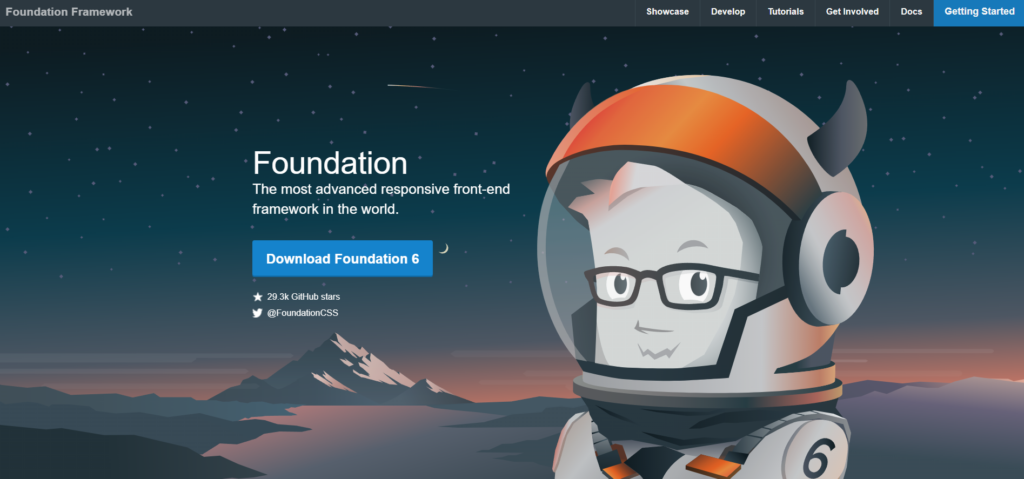
Foundation is your ideal companion for building web apps, mobile apps, websites, templates, and email designs. It offers a simple, lightweight, and readily implementable framework.
This framework isn’t just tailored to startups and beginners; it also features unique elements such as navigation, layouts, and media libraries. To expedite development, expand its capabilities with various plugins. Moreover, it excels in creating responsive designs. Whether you’re designing online apps or email templates, Foundation has your back with its user-friendly approach and adaptability.
Simple Grid (Free & Open-Source CSS Framework)
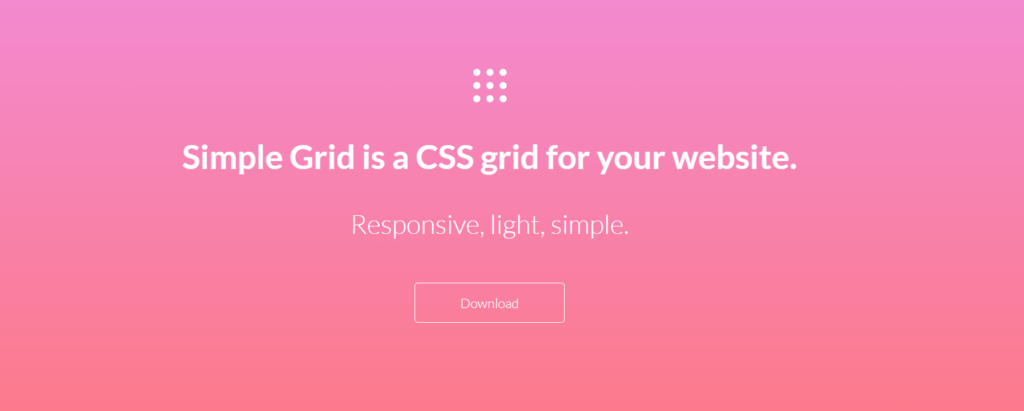
Simple Grid serves as a flexible tool for creating online applications with a clean design and a user-friendly front end. It’s a valuable resource for developers seeking a straightforward CSS grid. It specializes in delivering excellent results for 1140px layouts while effortlessly adapting to various layout sizes. The grid’s fluid columns ensure your website’s compatibility with different devices.
Whether you’re working on projects with uncomplicated layouts and structures or aiming for a user-friendly front end, Simple Grid has you covered. Furthermore, it allows for significant code size reduction, resulting in a mere 6KB file size. It’s the go-to choice for a streamlined and efficient web development strategy.
Cascade (Free & Open-Source CSS Framework)
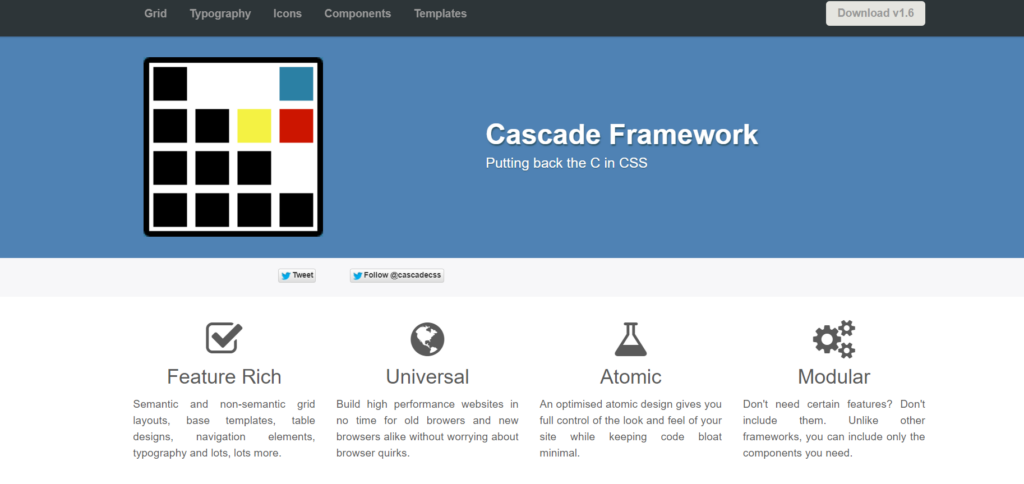
Cascade allows you to create both semantic and non-semantic grid layouts simply. Its uniform approach streamlines the whole design process, providing you with a unified experience. Use its built-in navigation components to easily navigate through your design, combine structured table designs, and utilize basic templates, among other features.
Cascade’s ability to go beyond simply building a device-agnostic web UI is what distinguishes it. It enables you to create designs that adapt fluidly between browsers, guaranteeing a consistent and dependable user experience. Cascade delivers all the tools you need for efficient and successful web design, whether concentrating on establishing a responsive interface or constructing cross-browser layouts.
Gumby (Free & Open-Source CSS Framework Based on Sass)
Gumby has a flexible grid, responsive design, toggles, a well-defined UI, and other features. It has lately gained favor among front-end developers. Front-end developers have complimented its powers.
Using these tools, you may create websites and web apps that properly satisfy project requirements. Furthermore, using Sass as a CSS preprocessor with Gumby speeds up the development process, allowing for faster project completion.
The built-in customizer is a useful tool that allows you to modify current grids and build new ones using a typographical scheme.
Conclusion
In conclusion, responsive web design frameworks are essential for every online project. In this post, we’ve explored the best framework for constructing a website, emphasizing the indispensability of incorporating a web framework into the program development process. Each software development method comes with its unique set of features and advantages, underscoring the importance of opting for well-established web development frameworks to expedite the development process.
Exploring web development solutions to aid developers in this endeavor is also a viable option. It is crucial to note that selecting the appropriate framework for your web project is ultimately determined by the project’s specific requirements.
FAQs
Why is Bootstrap such a popular responsive design framework?
Bootstrap enjoys its popularity due to its user-friendliness, comprehensive documentation, and a vast array of pre-designed components. These aspects simplify the task for developers, enabling them to create flexible and visually appealing websites.
Are these frameworks SEO-friendly?
Generally, yes. However, when working with any framework, it’s essential to adhere to SEO best practices. Properly structured HTML, along with the effective utilization of CSS and JavaScript, all contribute to improved SEO performance.
Are these frameworks compatible with major CMS platforms?
Yes, many frameworks seamlessly integrate with popular content management systems (CMS) like WordPress and Joomla, providing a solid foundation for responsive designs on dynamic websites.
What is the best framework for e-commerce websites?
The choice of framework depends on various factors, but common options for e-commerce include Bootstrap and WooCommerce for WordPress. These options come equipped with features and components designed specifically for online retailers.

